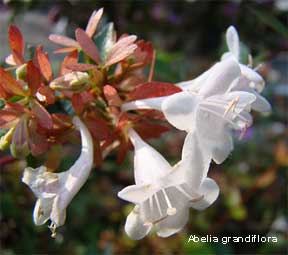Question: The front of our house has a lot of glass. Design wise is it a good idea to use “less plants” and in our case – remove plants so the view would be much cleaner. Most of the time I see foundation plants full of evergreens and everything seems so crowded or over done. Any advice? Axela, Windemere, Texas
Answer:
Alexa, the term “Foundation Planting” when properly used, refers to the planting around the base of the house. Compare it to of baseboard molding inside the house, which is to hide the seam between the wall and floor.
Foundation planting hides the seam between the outside wall and the ground. Where the foundation is high and the house itself is up several steps, foundation planting hides the exposed part of the wall.
On the other hand, if the house (like yours) is of distinctive and attractive design, and particularly where large glass areas reach to the base of the house, foundation planting may be almost completely unnecessary. If the house is low to the ground, the types of plants used should be fairly low except at the corners.
Tall In The Corners
In general, the tallest parts of the planting should be at the corners, and should dip down under the windows. The mature height of the plants should be considered when purchased because if they grow too tall they will cover the windows and block the air and light.
They should not be planted too close together or they will give a crowded effect you describe and each plant will lose its individuality if severely pruned. If properly done, the foundation planting can make a tall house look wider and give height to a low, flat one. It will also soften the sharp corner lines of the house.
Types of Plants Used In The Landscape Foundation
Some homeowners want all of the front planting and perhaps more to be entirely of evergreens so they will have green foliage in the winter. Others prefer deciduous flowering shrubs because the effect is more informal and they bloom in the spring or summer.

To obtain both advantages, you can plant a combination of evergreens and flowering shrubs. In addition, there is a large group of broad-leaved evergreen shrubs, which not only provide green foliage in the winter, and often flowers in the spring and summer, but add greatly to the entire effect by giving contrast in shades of green and shape of leaf.
Check your particular locality to find which are hardy in your climate. The abelia, for example, is evergreen only in some climates, although it may be partly deciduous and still be hardy. Frequently used shrubs in this class are rhododendrons, mountain laurel, and some azalea.
Select several different types of shrubs for your planting, but do not make the mistake of buying one of each type. The planting will look like a display catalog instead of a unified whole. In general, a house with a symmetrical exterior should have a symmetrical planting.
Using Flowering Shrubs
If you intend to use flowering shrubs, choose them so that there will be a succession of bloom during the spring and summer and different flower colors. Consider the color of the house and select plants whose flowers will show to good advantage against the house.
The yellow flowers of forsythia and Harrison’s yellow rose are not so effective near a house painted yellow as they are near a white or red house, but they will repeat satisfactorily the color of a yellow trim.
It is not advisable to use a red spirea or rose near a house painted red or made of red brick, but shrubs with white or yellow flowers would be excellent against brick.

High Color Plants
Highly colored plants red and yellow-leaved varieties and those with variegated foliage should be used with great restraint, particularly when planted near the house. It must be remembered in all foundation planting that it is meant to trim and blend with the house, not to stand out by itself. Plants which stand on their own merits should be placed in other parts of the garden.
Flowers are not advisable in foundation planting; they require constant care to keep them looking trim, such as cutting the dead flower pods and cutting down old shoots. Some, particularly the bulbs, must be allowed to remain uncut until the foliage browns naturally.
On the other hand, a ground cover, planted between the shrubs, will add to appearance by providing a green cover, some even in winter, will act as a mulch in preventing water evaporation from the soil and keeping down weeds, and some will even provide some color when in bloom.



Comments on this entry are closed.